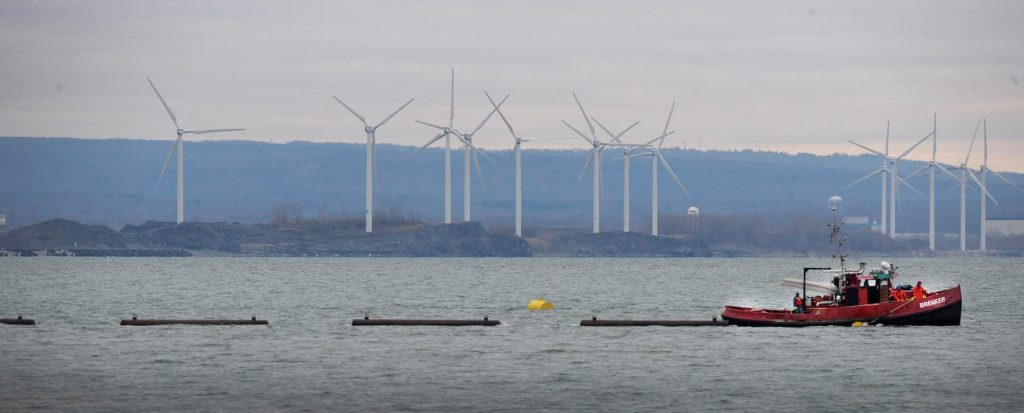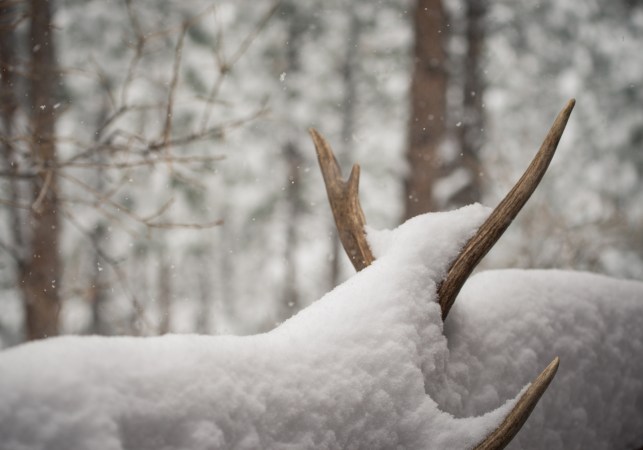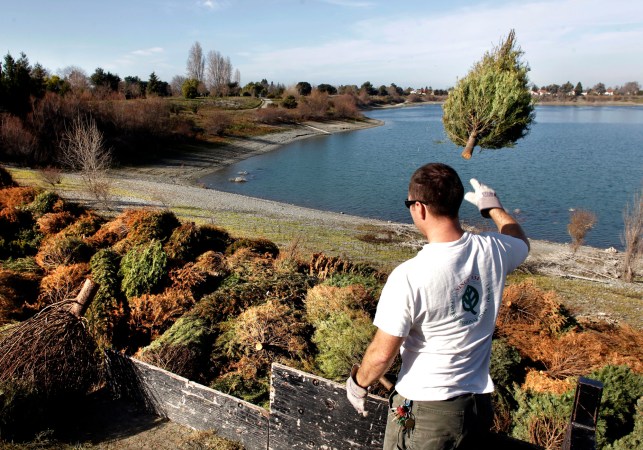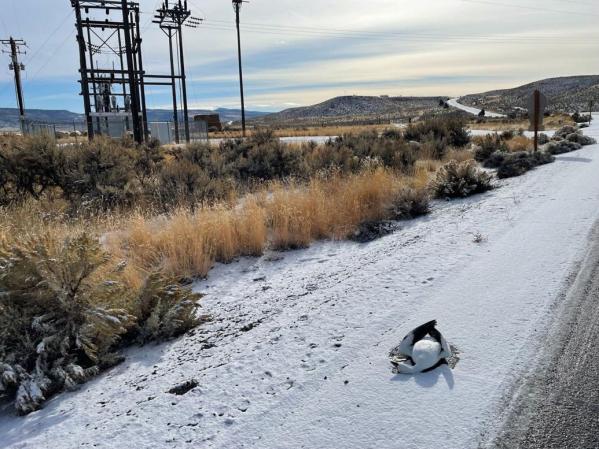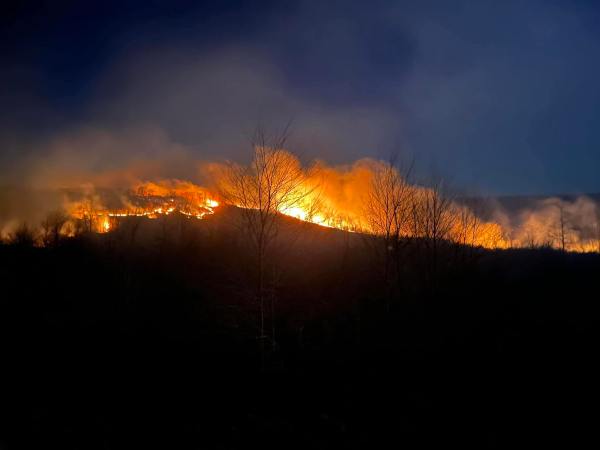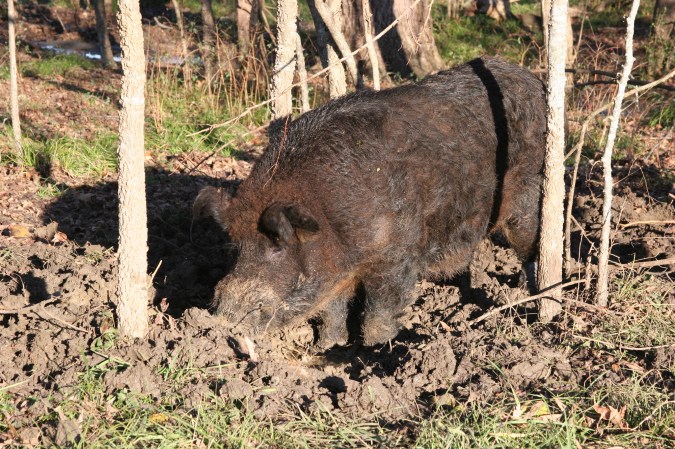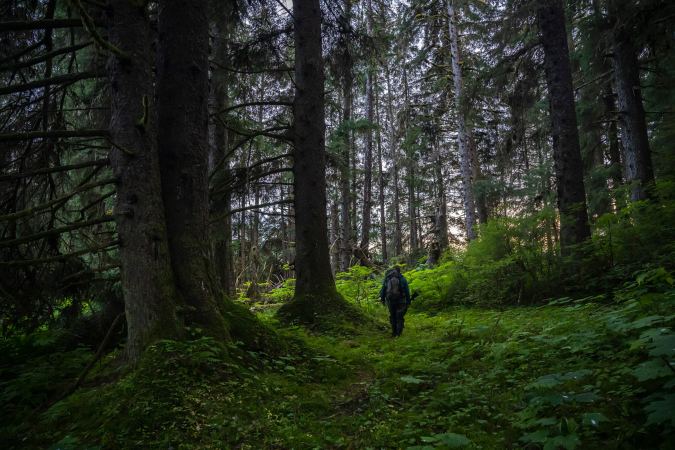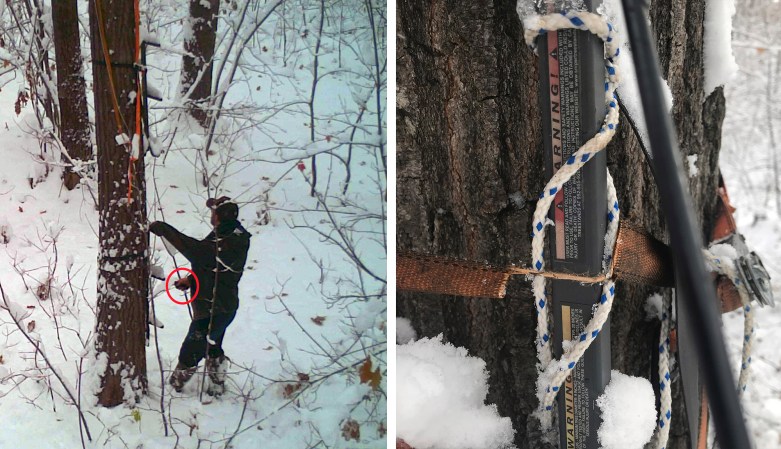Joseph Barrett calls himself a preacher without a church, and a serious angler who doesn’t fish much anymore. Utility regulators who manage Lake Erie’s outflow into the Niagara River have called him an uninformed radical. An increasing number of conservation groups are starting to call him a visionary. You might call him an ice evangelist.
Barrett is a vocal advocate for a single campaign, which he describes as the Great Lakes’ greatest environmental calamity of the last century.
He’s talking about the ice boom. A chain-linked flotilla of 22 septic-tank-sized steel buoys is deployed every early winter at Lake Erie’s outlet, just uplake of the big Niagara Falls hydro facility that separates New York from Ontario. The boom, first deployed in 1964, is intended to block the lake’s significant ice sheet from entering the river and flowing into a hydro facility and reducing power production during winter months.
But Barrett claims that, by depriving both the Niagara and Erie of scouring ice, the ecosystem of both water bodies has been drastically altered, with more sediment, more shoreline erosion, and less aquatic productivity than in the pre-boom era.
This year, the ice boom was pulled off the lake last week and won’t be redeployed until mid-December, “or when Lake Erie water temperature, as measured at the city of Buffalo’s water intake crib, reaches 39 degrees,” according to the operating charter kept by the International Joint Commission, the bilateral body that operates hydro facilities on the Niagara.
Barrett is hoping to stall this year’s deployment of the boom, or at the very least, force an assessment of the damage it causes to both the uplake and the downstream environment.
“The entire Lower Great Lakes ecosystem is being disrupted by the ice boom. In 60 years, it has done enormous damage,” says Barrett, a former competitive tournament angler who grew up fishing the Niagara River. “It is responsible for continual erosion of Strawberry Island [a historic island on the river just below the Erie outflow] and upstream, spawning beds and food shelf areas are covered in a thick, slimy ooze which renders them useless. Fish eggs sink in and are suffocated, fish populations are way off, and we’re seeing more algal blooms that are causing botulism outbreaks every summer” that kill thousands of shorebirds and waterfowl.

All those environmental problems are well-known and documented, but Barrett says they have two things in common.
“Nobody knew why these things were happening, that’s the first thing they had in common,” he says. “At every meeting I attended or scientific paper I read, not one person offered any reasonable explanation of what causes this or that.”
Barrett maintains the second commonality linking these maladies is the environmental changes caused by the ice boom, because instead of allowing the lake’s ice to grind downstream, the boom forces ice to melt in place, depriving Erie and the Niagara River of a vital ecological service.
It’s worth noting that not everyone blames the ice boom for Lake Erie’s water-quality problems. Environmental groups, including the Center for Public Integrity, say nutrient-rich runoff from upstream sources is the source of the frequent toxic algal blooms on the lake.
Streamside Epiphany
Barrett coined what he calls his “ice-boom theory” several years ago while wade-fishing 18 Mile Creek just above its confluence with Lake Erie.
“I kept hearing this deep groaning noise off in the distance but it seemed all around me, too,” he wrote. “It had a low, deep tone with vibration in it and it grew louder gradually. Just then, a floating ice sheet about four feet in diameter and two inches thick bumped my legs, startling me.”
This was a tributary version of the break-up and floe of ice that historically has happened in all the Great Lakes.
“I looked upstream on the creek and saw a horizontal avalanche of huge ice pieces coming at me, scrubbing everything in its path,” Barrett says. “There were small trees and all kinds of debris rolling along on its front edge. That’s when it hit me—not the ice, but the idea—what happens in the ecosystem when this sort of scour doesn’t happen? What happens when we let the lake’s ice melt in place instead of flowing? Mother Nature has been scouring the river every spring for the past 12,000 years.”
Barrett calls this annual scouring “the natural conveyor of nutrients and sediment” that has been stalled by the ice boom. Scouring freshens beaches, cleans fish-spawning substrate, and carries away oxygen-robbing dead vegetation. But when Barrett asked regulators to study the environmental effects of the ice boom, or to consider the ice boom as the common cause of the conditions that hydrologists and biologists were studying as individual problems, he says he was met with derision or his appeals were misfiled or simply ignored. In defense of the current operation, authorities on both sides of the international border often cite a 1983 study conducted by the National Institutes of Science that concluded there is “no feasible alternative to the present structure” and warned that damage to the Niagara power generation station could cause “a near disaster in New York power generation.”
Barrett thinks the revenue that utilities make from hydropower generation in the winter months—revenue that could be threatened if ice floes are allowed downstream to the intake structures—motivates defense of the status quo. Additionally, the City of Buffalo’s water intake structure might have to be armored or even moved in order to avoid damage from moving ice sheets.
“Pre-boom, it was difficult and expensive to operate icebreaker tugs to keep ice away from the intakes,” says Barrett. “That’s the origin of the ice boom. It was decided to stop icebreaking altogether at the mouth of the Niagara River. There were environmental studies done at the time, but they were woefully incomplete. The NYPA [New York Power Authority] told everyone that there were no adverse impacts to nature. The reality was that they made 1.8 percent more profit by doing this.”
The International Joint Commission, which manages border waters between the U.S. and Canada, declined an interview with its director for this story through its press office.
Meanwhile, lakeside communities have developed visitation economies based around ice-boom deployment and removal. One is called “Boom Days.” Mainly, Barrett says, the status quo is maintained because big government simply can’t stand to be proven wrong, especially by passionate individuals like himself.
Whether Barrett’s appeals will catch fire is anybody’s guess, though the environmental group Buffalo/Niagara Riverkeepers is interested in studies that consider alternatives to the boom. Regulatory approval for the ice boom is due for renewal sometime in the next decade. Maybe, says Barrett, that’s when his “ice-boom theory” will finally get serious consideration.
Meanwhile, he thinks Lake Erie’s fishery will continue to decline, its beaches will continue to be fouled by rotting vegetation, and algal blooms will continue to degrade the lake’s water quality.

